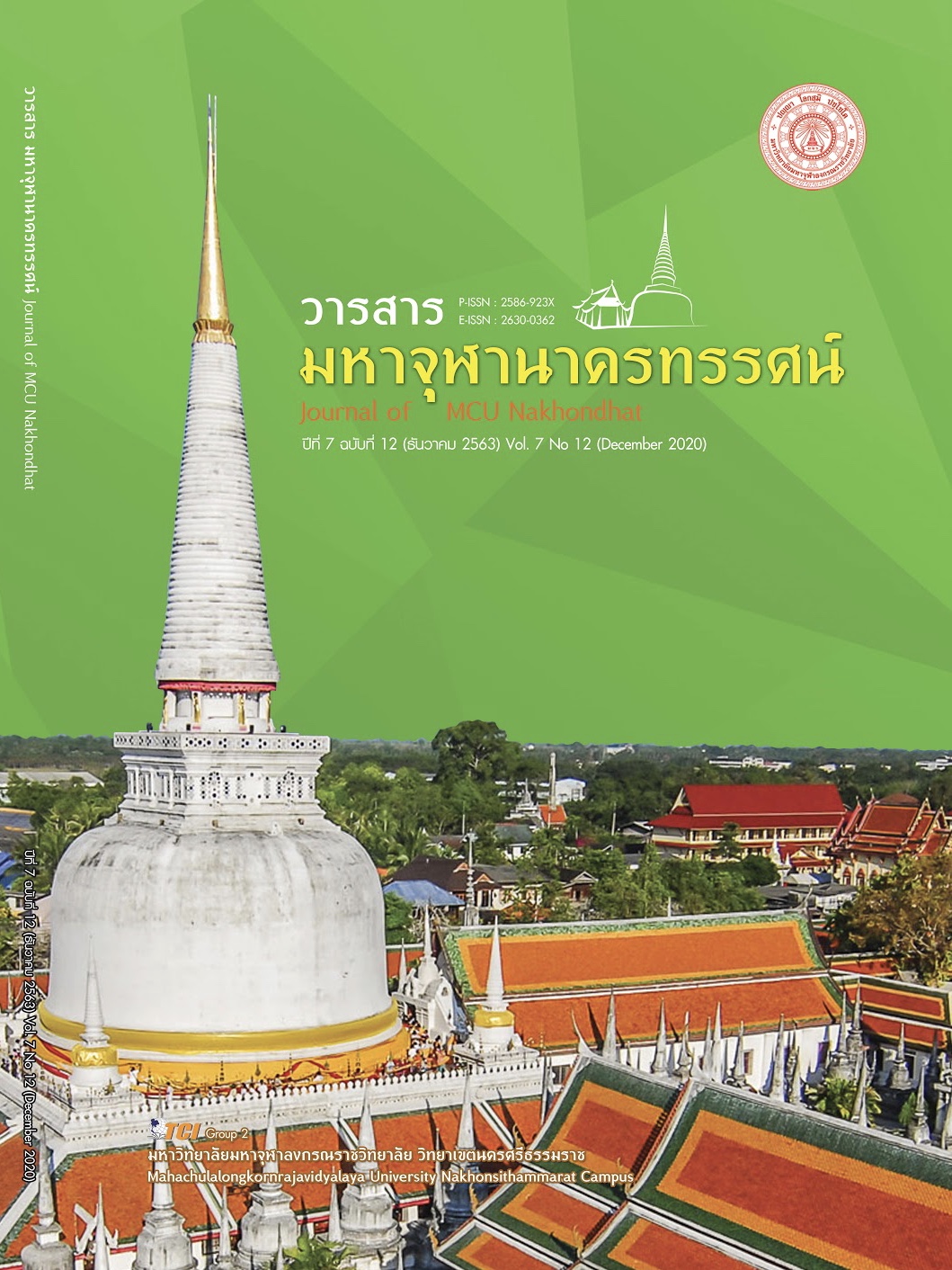CONCEPT OF THE RIGHT TO DIE ACCORDING TO BUDDHISM
Main Article Content
Abstract
The subject of “death” is generally found to be less popular and less considered, which may be attributed to the fact that the matter of death is a matter of nonsense. Unlucky and is a matter that brings sadness to those around you. Therefore death is not a matter of mention. People tend to pay more attention and focus on the matter of life. Death is a naturally occurring phenomenon. So according to the teachings of Buddhism. Suicide, either because of wanting to escape the pain. Or because it is considered to have the right to life Therefore, it should not be done in all cases.
Concept of the right to die according to Buddhism Humans have the right to die. Because Buddhism saw that it is also a person who loves and takes responsibility for himself more than anyone else. However, this right does not apply to all suicides and euthanasia. Suicide that asks others to do it. And direct euthanasia it is something that cannot be done because it is an act that violates the rights of others. Only the self - imposed suicide and voluntary indirect euthanasia. Only classified as a right that can be done the concept of the right to die under the Buddhist concept is close to the liberal idea incidentally, this concept of the right to die in Buddhism it's just a concept that confirms the power of the doer Which is not related to the issue of death, good or bad according to the principles of Buddhism.
Article Details
References
นฤมล มารคแมน. (2528). ปัญหาจริยธรรมอันเกี่ยวเนื่องกับการุณยฆาต. ใน วิทยานิพนธ์อักษรศาสตรมหาบัณฑิต สาขาพัฒนามนุษย์และสังคม. จุฬาลงกรณ์มหาวิทยาลัย.
ประพัฒน์พงศ์ สุคนธ์. (2549). การยกเว้นความรับผิดในการทำให้ผู้ป่วยตายด้วยความสงสาร. กรุงเทพมหานคร: โรงพิมพ์แห่งจุฬาลงกรณ์มหาวิทยาลัย.
พระธรรมปิฎก (ป.อ. ปยุตฺโต). (2546). พจนานุกรมพุทธศาสน์ ฉบับประมวลศัพท์. (พิมพ์ครั้งที่ 11). กรุงเทพมหานคร: โรงพิมพ์มหาจุฬาลงกรณราชวิทยาลัย.
พระราชบัญญัติสุขภาพแห่งชาติ พ.ศ. 2550 (ฉบับที่ 2). (2550). ราชกิจจานุเบกษา เล่ม 127 ตอนที่ 22 ก หน้า 4 (1 พฤศจิกายน 2563).
พระราชวรมุนี (ป.อ. ปยุตฺโต). (2529). พุทธธรรม. (พิมพ์ครั้งที่ 3). กรุงเทพมหานคร: โรงพิมพ์มหาจุฬาลงกรณราชวิทยาลัย.
มหาวิทยาลัยมหาจุฬาลงกรณราชวิทยาลัย. (2539). พระไตรปิฎกฉบับภาษาไทย ฉบับมหาจุฬาลงกรณราชวิทยาลัย เฉลิมพระเกียรติสมเด็จพระนางเจ้าสิริกิติ์ พระบรมราชินีนาถ. กรุงเทพมหานคร: โรงพิมพ์มหาจุฬาลงกรณราชวิทยาลัย.
ราชบัณฑิตยสถาน. (2556). พจนานุกรม ฉบับราชบัณฑิตยสถาน พ.ศ. 2554. (พิมพ์ครั้งที่ 2). กรุงเทพมหานคร: นามมีบุ๊คส์พับลิเคชั่นส์ จำกัด.
สมภาร พรมทา. (2541). พุทธศาสนากับปัญหาจริยศาสตร์ โสเภณี ทำแท้ง และการุณยฆาต. กรุงเทพมหานคร: โรงพิมพ์แห่งจุฬาลงกรณ์มหาวิทยาลัย.
สุเมธ เมธาวิทยากุล. (2545). ศาสนาเปรียบเทียบ. กรุงเทพมหานคร: ห้างหุ้นส่วนจำกัดทิพย์อักษร.
สุจิตรา รณรื่น. (2527). ศาสนาเปรียบเทียบ. กรุงเทพมหานคร: ห้างหุ้นส่วนธนะการพิมพ์.
Gerald Dworkin et al. (1998). Euthanasia and Physician - assisted Suicide. Cambridge: Cambridge University Press.
Keown, Damien. (2001). Buddhism and Bioethics. New York: Palgrave.
Robert Audi. (1999). The Cambridge Dictionary of Philosophy. Cambridge: Cambridge University Press.


